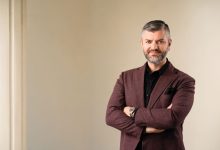Marius Persinaru says “The Answer to Efficient Energy Consumption is EcoStruxure”
Schneider Electric provides energy and automation digital solutions for efficiency and sustainability. The company combines world-leading energy technologies, real-time automation, software and services, developing integrated solutions for homes, buildings, data centres, infrastructure and industries. Marius Persinaru – Country President Schneider Electric Romania & Republic of Moldova, echoed that in our conversation.
Dear Mr. Persinaru, you have been President of Schneider Electric Romania & Republic of Moldova since 2016. How does Schneider Electric position itself at global and regional level?
Marius Persinaru: Schneider Electric has a history of over 180 years, being founded during the first Industrial Revolution of Schneider brothers, in France. The company provides energy management and automation solutions, which allow clients to become more efficient and more sustainable. In a world where, often, the rush for profit prevails over anything else, our perspective is that a company can be more profitable making important cost savings, without forgetting that we live on a planet with limited resources and a reduced capacity of Earth regeneration.
Our solutions capitalize on the latest technologies for housing, buildings, data centres, infrastructure and various industries. Due to our integrated solutions, processes within companies and electricity supply become more efficient, more sustainable and more reliable.
We entered the Romanian market in 1997 and we activate on numerous segments, including buildings, IT, water & waste water, oil & gas, utilities, metals & minerals, mining.
In the capital of Romania we have also our Bucharest Hub – a customer services centre, which serves a large part of Europe.
What does the portfolio of technologies of the company include and to whom are they addressed?
Marius Persinaru: Our focus is on the business segment. Our connected technologies and solutions for energy management and process automation within companies allow them to streamline their activity and make it more sustainable. We activate on numerous markets, such as: industrial sectors, energy, buildings, medical services. On the business segment our solution is EcoStruxure, IoT-enabled, open, interoperable platform, which has been tailored for main five key markets: EcoStruxure Building, Grid, IT, Plant & Machine.
Our portfolio also includes products intended for B2C users, sold through partners – home automation solutions, switchgears or home UPS.
How do you assess the energy market in the area you operate in relation to the overall picture?
Marius Persinaru: The energy market is one of the most important for us and there are many things to be done in this field. It is interesting that, in the middle of so many discussions about digital transformation, it is not among the leaders in terms of digitization – not only in Romania, but on a global level. We believe it should be one of strategic importance, so as to cope with the deep changes it needs to support the growing consumption and integrate more energy from renewable sources.
In the context of the current challenges at European and global level – climate change, amendments to the community directives, as well as the fiscal, legislative, technological evolutions, how attractive are the markets in Romania and the Republic of Moldova for investors?
Marius Persinaru: They are attractive in view of the fact that they have room for big growth, compared to the mature Western markets. Even if there are some challenges that must be overcome – in terms of fiscal or legislative unpredictability or with regard to infrastructure, there are some certain advantages: natural resources, geographical position, mobile telephony network and Internet access very well developed, maritime and river transport facilities (Romania), as well as a highly qualified workforce in the IT or engineering fields – although insufficient in terms of number, compared to the demand.
What are in your opinion the main problems/deficiencies of the energy system in Romania at this point and what could be the solutions?
Marius Persinaru: One of the problems is that, although traditionally an energy producer, Romania has significantly increased its import lately, at very high prices. We all know what huge impact on the economy a general blackout has, so measures to prevent such a situation are mandatory.
Another problem is the price of electricity, which is high, one of the highest in the region, which has an impact on the industry. Therefore, measures to upgrade the electricity distribution networks, to avoid losses and make reaction more flexible in the case of interruption of electricity supply are vital.
One of the stringent issues remains, indeed, the workforce in the sector. How do you see the evolution of this situation?
Marius Persinaru: The workforce problem has been affecting numerous sectors for several years already and will become more acute in the future, in absence of measures coming from both the private environment and the public one. The private environment is already taking measures in this regard. Our company, for example, has partnerships with profile universities in several cities in the country, organizes internships for students and, in addition, focuses on the benefits granted to employees, so as to reduce staff fluctuation and attract new applicants.
In the long run, it is possible that the import of workforce will have a higher share to balance the current situation.
In the latest draft energy strategy investments in the energy system are estimated at tens of billions of euros. How can they materialize in your opinion?
Marius Persinaru: Digitization of the electricity distribution system should be a top priority, for one very simple reason: any new developments in the field of energy will be functional only in a digitized network. Moreover, distribution problems can only be solved by adopting digitized solutions, with advanced monitoring, analysis, control and planning features. The systems currently used operate based on several interfaces and multiple databases, obviously with higher management and maintenance costs. The alternative is a unique technology, of the type of EcoStruxure ADMS, which we have in our portfolio and comes with a single database and a unique interface.
The benefits of implementing such smart systems are tangible: for example, in Italy, we have collaborated with Enel, which has approximately 32 million customers in the Italian Peninsula, to upgrade its network. According to the client’s data, the modernization process has brought, besides an easier and more efficient management, a reduction of losses equivalent to the consumption of 50,000 Italian households, each year.
As energy efficiency is currently a number one priority, not to mention that electricity prices have recently reached a record level in Romania, what solutions does Schneider Electric propose to this end?
Marius Persinaru: EcoStruxure is our efficiency solution, which capitalizes on the latest discoveries in the IoT, mobility, cloud or cyber security fields. The connected products in its structure analyse the processes in a company and generate analytical data, based on which measures for the efficiency of activity can be taken.
EcoStruxure is adapted for all areas where there is room for a greater efficiency of the energy consumption – from spaces and commercial buildings to data centres and electricity distribution networks. Implementing these solutions has spectacular results, as it results from a report by Schneider Electric, which summarizes the data from the projects carried out over the past 5 years, in 41 countries. Although there is a bias that digitizing processes within a company could be a costly and complicated process, the study shows that energy savings can reach up to 85%, with an average value of 24%.
What role does innovation (research and development) play within the company and what are the most important programs & investments in this field?
Marius Persinaru: Research is a very important field for our company, given that we plan to bring innovation to every level of a company. 5% of the global turnover goes to R&D annually. The company is involved, together with other partners, in numerous research projects, covering areas such as smart grid, cyber security, renewable energy, IoT, smart cities.
One of the projects in progress – until 2021 – is FITOPTIVIS, which aims to increased flexibility in smart transmission grids with storage entities and large penetration of renewable energy sources. Another current example is Flexitranstore, an integrated platform for demand.
Renewable energy storage at a large scale would bring significant benefits for this type of energy. How does Schneider Electric see this business area?
Marius Persinaru: Renewable energy storage is related to the development of the prosumer concept, which is part of redefining the energy consumption paradigm. They can be organizations that produce energy with the help of solar panels, mixed electrical and thermal energy systems or wind turbines or household consumers who have the necessary technologies to produce and use energy.
Romanian Energy Regulatory Authority (ANRE) regulations on prosumers were issued in our country last year. It is an important step, the procedures being simplified, and distribution operators having the obligation to make the connection possible within 30 days. Investment in the photovoltaic system is quite difficult to recover, but there are countries where the investment is recovered even in 5 years.
Indeed, for a better control over the generated energy and a uniform distribution of resources – irrespective of the environmental conditions (whether or not), the energy storage systems are the solution. They allow generation and storage at optimal times to be used when needed or even sell the surplus to the operator. In the case of those who enter a demand response management program, the system can automatically coordinate the requests from the electricity supplier.
Schneider Electric has such energy storage solutions ready to be implemented.
What does the Smart City concept mean for Schneider Electric and what is the company’s approach to it?
Marius Persinaru: From our point of view, a city must fulfil three conditions to be smart: have a great degree of connectivity, energy efficiency and sustainability. Residents of a smart city have at their disposal the necessary framework for an efficient and comfortable lifestyle: accurate and handy information through applications, fluid traffic, smart parking systems.
Considering that the urban global population will grow by 2.5 billion by 2050 (according to the United Nations Department of Economic and Social Affairs), it is vital for a city to reduce its carbon footprint and improve its electricity and water supply systems, to meet the demand. For example, a smart city should monitor the energy consumption and find alternative sources, such as micro-grids or solar energy. There are potential solutions, but it is important that the local administrations have the vision of how they can make the cities smart and adopt the most appropriate measures.
What are the figures of the previous year (the most important achievements) and how do you estimate that 2019 will end?
Marius Persinaru: 2018 was a good year, with growths, and we expect 2019 to be even better. We focus on promoting augmented reality solutions, which allow for the detailed visualization of any information about an equipment, from a tablet, speeding up the decision-making process.
Of course, we continue the projects of modernization of electricity distribution networks, already started.







